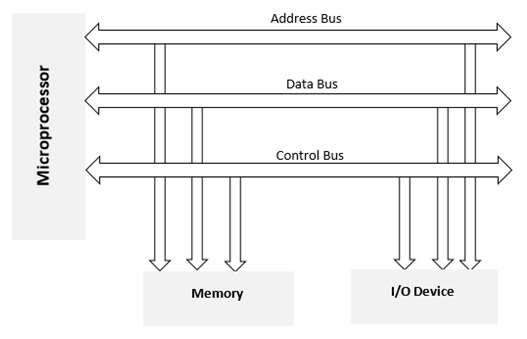
- Microprocessor Tutorial
- Microprocessor - Home
- Microprocessor - Overview
- Microprocessor - Classification
- 8085 Microprocessor
- Microprocessor - 8085 Architecture
- 8085 Pin Configuration
- Addressing Modes & Interrupts
- 8085 Instruction Sets
- 8086 Microprocessor
- Microprocessor - 8086 Overview
- 8086 Functional Units
- 8086 Pin Configuration
- 8086 Instruction Sets
- Microprocessor - 8086 Interrupts
- 8086 Addressing Modes
- Multiprocessor Configuration
- Configuration Overview
- 8087 Numeric Data Processor
- I/O Interfacing
- I/O Interfacing Overview
- 8279 Programmable Keyboard
- 8257 DMA Controller
- Microcontrollers
- Microcontrollers - Overview
- Microcontrollers - 8051 Architecture
- 8051 Pin Description
- 8051 Input Output Ports
- Microcontrollers - 8051 Interrupts
- Peripheral Devices
- Programmable Peripheral Interface
- Intel 8255A - Pin Description
- 8253 - Programmable Interval Timer
- 8253/54 - Operational Modes
- Microprocessor Useful Resources
- Microprocessor - Quick Guide
- Microprocessor - Useful Resources
- Microprocessor - Discussion
Microprocessor - I/O Interfacing Overview
In this chapter, we will discuss Memory Interfacing and IO Interfacing with 8085.
Interface is the path for communication between two components. Interfacing is of two types, memory interfacing and I/O interfacing.
Memory Interfacing
When we are executing any instruction, we need the microprocessor to access the memory for reading instruction codes and the data stored in the memory. For this, both the memory and the microprocessor requires some signals to read from and write to registers.
The interfacing process includes some key factors to match with the memory requirements and microprocessor signals. The interfacing circuit therefore should be designed in such a way that it matches the memory signal requirements with the signals of the microprocessor.
IO Interfacing
There are various communication devices like the keyboard, mouse, printer, etc. So, we need to interface the keyboard and other devices with the microprocessor by using latches and buffers. This type of interfacing is known as I/O interfacing.
Block Diagram of Memory and I/O Interfacing

8085 Interfacing Pins
Following is the list of 8085 pins used for interfacing with other devices −
- A15 - A8 (Higher Address Bus)
- AD7 - AD0(Lower Address/Data Bus)
- ALE
- RD
- WR
- READY
Ways of Communication − Microprocessor with the Outside World?
There are two ways of communication in which the microprocessor can connect with the outside world.
- Serial Communication Interface
- Parallel Communication interface
Serial Communication Interface − In this type of communication, the interface gets a single byte of data from the microprocessor and sends it bit by bit to the other system serially and vice-a-versa.
Parallel Communication Interface − In this type of communication, the interface gets a byte of data from the microprocessor and sends it bit by bit to the other systems in simultaneous (or) parallel fashion and vice-a-versa.
